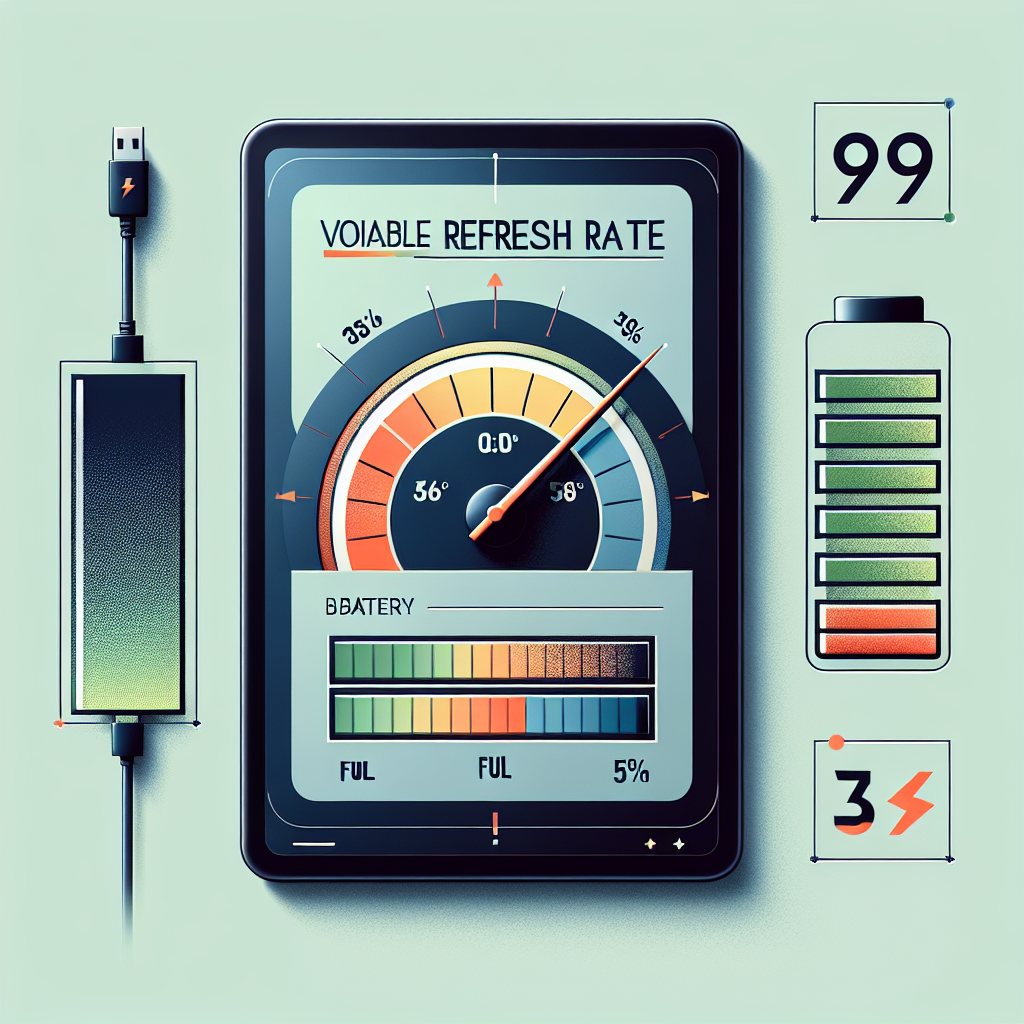Tablets have become essential tools in both our personal and professional lives. One of the latest advancements in tablet technology is the introduction of variable refresh rate (VRR) displays. This feature can significantly conserve battery life, boosting the efficiency and usability of tablets. But how exactly does VRR work, and what impact does it have on battery conservation?
Understanding Variable Refresh Rate (VRR)
Variable Refresh Rate is a display technology that dynamically adjusts the refresh rate of the screen based on the content being displayed. Traditional displays have a fixed refresh rate, typically 60Hz or 120Hz, meaning the screen refreshes itself 60 or 120 times per second, regardless of the content shown. In contrast, VRR changes the refresh frequency in real-time, resulting in a more efficient display operation.
How VRR Works
VRR adjusts the screen’s refresh rate to match the frame rate of the current content. For instance, if you’re browsing the web or reading an eBook, the refresh rate will drop to a lower frequency since these activities do not require high refresh rates. Conversely, more intensive tasks, such as gaming or watching videos, will activate a higher refresh rate. This flexibility helps in conserving power as the screen is not consistently refreshing at high rates when it is unnecessary.
Technical Benefits of VRR
- Smoother Visual Experience: VRR reduces screen tearing and stuttering, resulting in a seamless visual experience.
- Enhanced Battery Life: By lowering the refresh rate for less demanding tasks, battery consumption is minimized.
- Adaptive Synchronization: VRR synchronizes with the GPU output, providing optimized and efficient performance.
Battery Life and Power Consumption
One of the primary concerns for tablet users is battery life. Traditional screens with fixed refresh rates consume a consistent amount of power, often draining the battery quickly, especially with high refresh rates. VRR mitigates this issue by dynamically lowering the refresh rate when high frequencies are unnecessary, which directly translates to prolonged battery usage.
Power Consumption Analysis
To illustrate the power-saving capabilities of VRR, consider the following data:
| Activity | Traditional Fixed Rate (60Hz) | Optimized VRR (30Hz – 60Hz) |
|---|---|---|
| Web Browsing | 8 hours | 12 hours |
| Video Playback | 7 hours | 10 hours |
| Gaming | 4 hours | 5.5 hours |
As observed, tablets with VRR demonstrate a substantial increase in battery life across various activities, making them highly advantageous for users seeking long-term performance.
Advantages of VRR-Enabled Tablets
Longer Battery Lifespan
Since VRR reduces the overall strain on the battery by adapting the screen’s refresh rate, it consequently prolongs the battery lifespan. This feature is especially beneficial for users who rely on their tablets for prolonged periods.
Improved User Experience
Beyond battery conservation, VRR significantly enhances the user experience by providing smoother visuals and reducing latency. This technology is particularly beneficial for responsibilities that require quick frame rates such as gaming and video editing.
Energy Efficiency
With environmental concerns becoming increasingly prominent, energy efficiency is crucial. VRR helps tablets achieve better energy performance, making them a more eco-friendly option.
The Future of VRR in Tablets
As technology continues to evolve, VRR is expected to become a standard feature in tablets and other mobile devices. Manufacturers are recognizing the dual benefits of enhanced user experience and battery conservation that VRR offers. Future advancements might include even more precise refresh rate adjustments and integration with other power-saving technologies.
Potential Innovations
- AI Integration: Utilizing artificial intelligence to predict user behavior and proactively adjust the refresh rate.
- Advanced Synchronization: Improving synchronization between the display and graphical outputs for even smoother performance.
- Cross-Device Compatibility: Developing VRR technologies that work seamlessly across different devices for a unified experience.
Conclusion
Variable Refresh Rate technology represents a significant leap forward in tablet display technology. By dynamically adjusting to the necessary refresh rate based on current usage, VRR not only conserves battery life but also enhances the overall viewing experience. As VRR becomes more prevalent, users can expect to see longer battery life and smoother performance, making their tablets more efficient and enjoyable to use.




